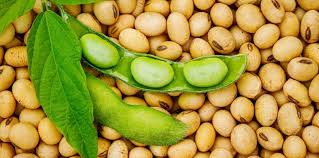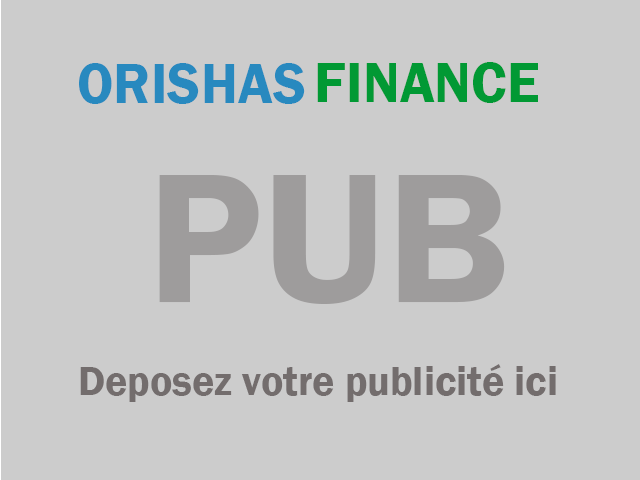 Les actualités de la BRVM en Flux RSS
Les actualités de la BRVM en Flux RSS
Nous agrégeons les sources d’informations financières spécifiques Régionales et Internationales. Info Générale, Economique, Marchés Forex-Comodities- Actions-Obligataires-Taux, Vieille règlementaire etc.
Profitez d'une expérience simplifiée
Retrouvez toute l'information économique et financière sur notre application Orishas Direct à Télécharger sur Play StoreL’interventionnisme étatique ferait-il son retour sur les marchés africains de matières premières agricoles et d’ailleurs au-delà ? La question mérite d’être posée au regard des évolutions ces derniers mois sur les marchés du cacao et de la vanille naturelle. Des marchés qui présentent, par ailleurs, de grandes similitudes, ces caractéristiques pouvant être perçus comme étant des critères pour que ce type de politique puisse être mise en œuvre.
Madagascar représente cette année 77% de la production mondiale de vanille ; la Côte d’Ivoire et le Ghana, à eux deux, représentaient 61,7% en 2019/20 de la production de cacao, selon les chiffres de l’Organisation internationale du cacao.
En février 2020, suite à l’effondrement du prix mondial de la vanille qui se négocie de gré à gré, le gouvernement malgache a décrété un prix minimum unique à l’exportation, quelque soit la qualité des gousses, de $ 350 le kilo pour la campagne 2019/20 qui s’achève en mai. Pour la campagne 2020/21, tenant compte de l’effondrement du prix sur le marché mondial, le prix minimum à l’export a été fixé à $ 250. Certes, il a été abaissé de $ 100 mais demeure grosso modo de $ 75 à $ 100 supérieur au prix à l’export d’autres pays producteurs comme la Papouasie Nouvelle Guinée ou encore l’Indonésie. Bien sûr, chaque origine a ses spécificités et donc son prix, la vanille de Madagascar cette année étant particulièrement de belle qualité, mais peut-être pas à ce niveau de différentiel.
Côté cacao, la Côte d’Ivoire et le Ghana ont introduit en juillet 2019 un différentiel de revenu décent (DRD ou LID en anglais) de $ 400 la tonne qui s'ajoute systématiquement à chaque contrat conclu depuis le démarrage de l’actuelle campagne 2020/21, le 1er octobre dernier (lire nos informations : Lancement de l'Initiative Cacao Côte d'Ivoire-Ghana).
Les trois pays ont affiché vouloir sauvegarder le planteur en ces périodes de baisse des cours et de turbulences des marchés. Mais cette politique mise en œuvre dans les trois pays a, en fait, provoqué l’effet inverse : les acheteurs internationaux freinent leurs achats, battant le fer avec les pays producteurs. Résultat, le prix au planteur chute ou baisse car la demande n’est pas au rendez-vous à l’export.
Si en Côte d’Ivoire et au Ghana, le planteur bénéficie d’un prix garanti minimum d’achat de son cacao, ce n’est pas le cas de Madagascar où le planteur et seul face au marché. Mais, même en Côte d’Ivoire, les informations qui remontent des ceintures de production témoignent que des planteurs doivent brader leur production à un prix en-deçà du prix garanti pour trouver un acheteur pour leurs fèves de cacao. Même les coopératives ont des difficultés à payer les planteurs pour le cacao qu’ils leur apportent car elles ont du mal à ensuite l’évacuer sur les ports d’Abidjan et de San Pedro puisque les exportations ont baissé (lire nos informations : Des chocolatiers ont repoussé leurs expéditions de cacao de Côte d'Ivoire créant un surstockage). En outre, on connait aussi, mais au niveau mondial, une pénurie de navires ce qui contraint encore les exportations.
D’ailleurs, si le 11 novembre 2020, dans le communiqué final qui a clos la réunion entre le Conseil du café-cacao (CCC) et le Ghana Cocoa Board (Cocobod), il est dit que « les prix aux producteurs dans les deux pays ont été augmentés de manière adéquate, la totalité du DRD ayant été versé directement aux producteurs de cacao », on peut s’interroger puisque les planteurs ont du mal à vendre au prix officiel garanti.
Les similitudes – avec leurs divergences, bien sûr- frappent entre les politiques menées par ces pays producteurs leaders des marchés du cacao et de la vanille mais aussi par la réaction du marché et, plus particulièrement, des acheteurs et de l’industrie qui n’hésitent pas à remettre en cause cette politique, certains que seul le libéralisme de marché peut permettre aux producteurs d’améliorer sa condition de vie. Car on ne saurait s’imaginer que des entreprises et des multinationales qui ont élaboré au cours de la dernière décennie des stratégies de durabilité des filières et d’amélioration des conditions de vie des planteurs avec lesquels ils travaillent puissent d’un revers de main balayer une politique qui est présentée comme favorable au producteur. Alors, soit les stratégies de développement durable des filières sont de la poudre aux yeux, soit les entreprises et multinationales savent, par expérience ou par philosophie, que l’interventionnisme économique étatique ne permet pas un mieux-être pour les producteurs. Et on ne saurait penser que ces acteurs économiques mondiaux tirent des leçons et conclusions de caisses de stabilisation et autres organismes similaires qui œuvraient maintenant il y a plus de 30 ans dans un contexte économicopolitique très différent.
De là, on peut s’interroger. Si les stratégies ghano-ivoirienne et malgache s’avèrent à succès, on peut imaginer que ces politiques soient mises en œuvre pour de nombreux autres produits où l’offre mondiale est très concentrée comme, par exemple, la Côte d’Ivoire sur la noix de cajou. Mais si ces politiques s’avèrent infructueuses, on peut imaginer d’autres politiques comme celle de l’Indonésie qui, chaque mois, fixe sa taxe à l’exportation d‘huile de palme brute en fonction de son anticipation du cours mondial sur le mois suivant. Cette mesure, qui poursuit d’autres objectifs que ceux affichés par la Côte d’Ivoire ou Madagascar, ne soulève pas -ou plus- aucun argumentaire ou polémique.
A noter que l’Indonésie aussi se penche sur sa politique d’exportation puisqu’elle a modifié en fin d’année dernière sa politique fiscale à l’exportation d’huile de de palme brute (lire notre chronique hebdomadaire sur les marchés de matières premières en date du 4 décembre 2020. Alors qu’auparavant l’Indonésie imposait une taxe fixe à l’export de $55 la tonne, quel que soit le cours mondial, maintenant ses prélèvements sont progressifs, allant de $55 à $255, selon les niveaux de prix : à $670 la tonne d’huile de palme brute ou à moins, le prélèvement sera de $55 la tonne et il augmentera de $15 pour chaque hausse de prix de $25. Une politique qui ne vise pas à soutenir le prix au producteur mais à subventionner son ambitieux programme de biodiesel.
Cependant, là où le bât blesse, est que la base de référence est toujours le marché mondial avec ses aléas, ses fluctuations et ses spéculations souvent à des années lumières des préoccupations et du quotidien des planteurs….
Vous devez être membre pour ajouter un commentaire.
Vous êtes déjà membre ?
Connectez-vous
Pas encore membre ?
Devenez membre gratuitement
05/12/2025 - Matières Premières
05/12/2025 - Matières Premières
05/12/2025 - Matières Premières
05/12/2025 - Matières Premières
04/12/2025 - Matières Premières
03/12/2025 - Matières Premières
03/12/2025 - Matières Premières
03/12/2025 - Matières Premières
03/12/2025 - Matières Premières

05/12/2025 - Matières Premières

05/12/2025 - Matières Premières

05/12/2025 - Matières Premières
